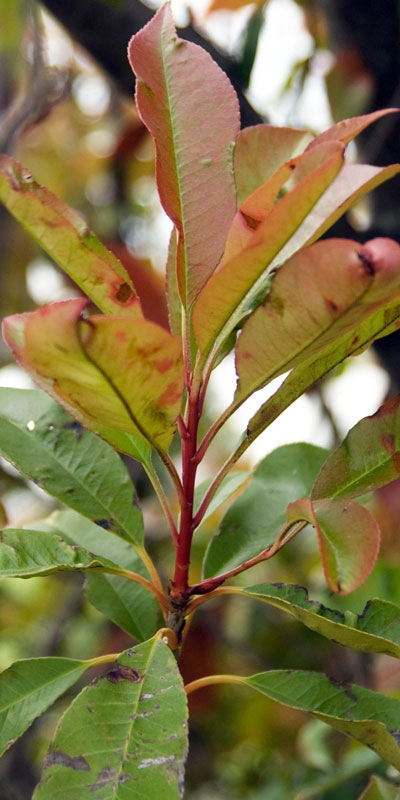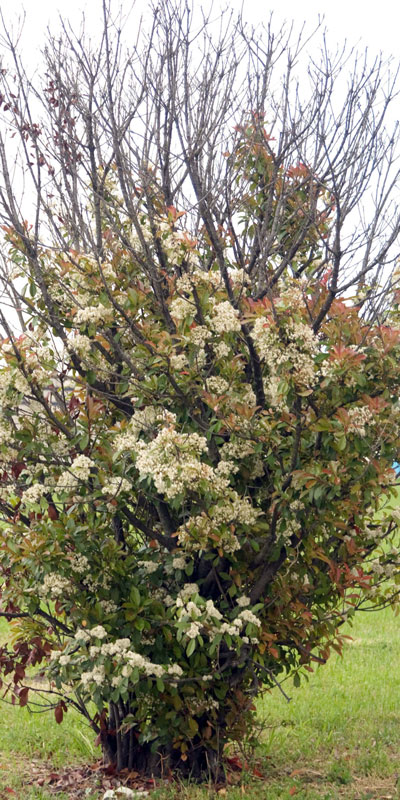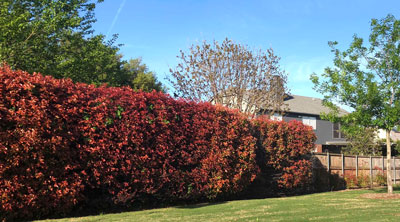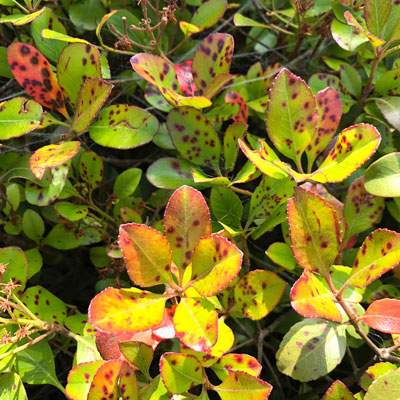Question of the Week: April 11, 2019
“What is killing my redtip photinias? Can I replant more of them?”

Redtip photinias are spectacular shrubs as their new growth comes out in the spring. It’s no wonder everyone has loved them.
However, back in the 1980s a fungal disease began to appear and it threatened their very existence. Now, here we are almost 40 years later and we still don’t have a good chemical control for it. It’s Entomosporium.

The first thing you’ll see will be maroon-colored freckles dotting the leaves. They seem harmless enough that first year, but then you begin to notice the leaves losing their color and even puckering as the spots become much more common. The twigs and even branches die out and eventually entire plants are lost out of long rows.

The temptation when all of that happens is to replace those lost plants with more redtip photinias, but we’ve discovered that that would be folly. New plants soon develop the disease, too, and you’re right back where you started. And, as mentioned, there is no prevention or cure for this particularly troublesome pest.
Your best replacements for tall, screening shrubs would be Nellie R. Stevens hollies, Needlepoint hollies, Oakland hollies or waxleaf ligustrums.

Note: Entomosporium has mutated and spread to a closely related shrub, Indian hawthorn – enough so that I no longer recommend them for Texas landscaping. The better choice, and the alternative for replacement when you need to, would be Carissa hollies. They have just about the same growth habit and texture and they’re immune to the disease.
